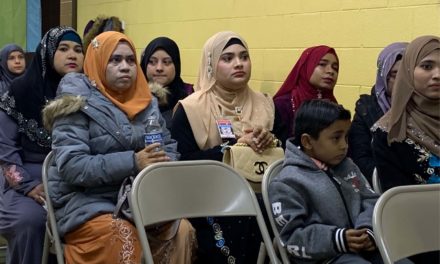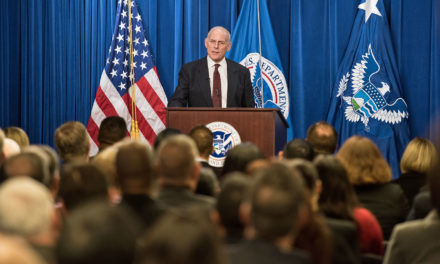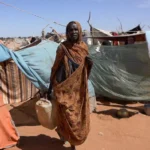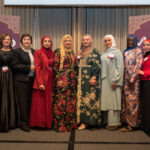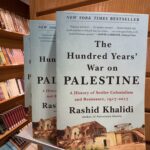President Trump signed (on April 8, 2025) a series of executive orders aimed at supporting the coal industry—a heavily polluting energy source that has been in decline—allowing some older coal-fired power plants scheduled for retirement to continue operating.
Extreme weather is becoming increasingly dangerous, especially heavy rainfall events that experts say are becoming more frequent due to climate change. These powerful storms threaten lives and infrastructure, causing everything from downed power lines to deadly flooding.
A study published on March 27, 2025, in the journal Science revealed that global warming has significantly diminished Earth’s water storage in soil, lakes, rivers, snow, and other land-based sources. Over the last two decades, our planet’s soil moisture has dropped by more than 2,000 gigatons.
The “Four Horsemen of the Apocalypse” appear in the Book of Revelation in the New Testament. Symbolically, they have been used to describe global crises: climate change, war, famine, and preventable disease. A 2025 report blames four major industries—tobacco, ultra-processed foods, fossil fuels, and alcohol—for 2.7 million deaths annually in Europe, as they continue to resist public health policies that would affect their profits. The WHO warns that industry lobbying is hindering progress in combating cardiovascular diseases, cancer, and diabetes. Alarmingly, nearly 60% of European adults and one-third of children are now overweight or obese.
Europe is warming faster than any other continent and has been heating up at twice the global average since the 1980s. February 2025 marked the warmest February in recorded history, making it the ninth consecutive month to break global temperature records. Since 1979, heat waves have increased by 67% globally, according to Science Advances.
Carbon dioxide levels have reached their highest concentration in at least two million years, and global warming continues to intensify the risks of extreme weather. The Nature Sustainability journal projects that more than 90% of the global population will be exposed to the compounded dangers of heat and drought, with tenfold increases in risks under current high-emission trends.
In February 2024, Antarctic sea ice shrank to its lowest level in 45 years of satellite observation, highlighting the urgency of climate action.
Although the word “Armageddon” appears only once in the Christian Bible (Revelation 16:16), it is often interpreted as a symbolic site of global conflict. The text speaks of a gathering for the “war of the great day of God Almighty,” which many interpret metaphorically in modern times as the ongoing global struggle against climate change and human conflict.
Christianity, Judaism, and Islam each emphasize the importance of environmental stewardship. Believers are seen as trustees or guardians of the Earth, accountable to God for how they manage its resources. This shared belief in caring for the planet provides a powerful moral foundation for collective climate action.
In the first half of 2022, natural disasters caused an estimated $72 billion in economic losses, driven by climate-fueled storms and floods, according to Swiss Re. Oxfam’s 2020 report found that the wealthiest 10% of the global population produce half of the world’s carbon emissions, while the poorest 50% contribute just 10%.
Like Judaism and Christianity, Islam includes a vision of an end-of-times transformation. It speaks of a final struggle between good and evil, followed by an era of peace and spiritual fulfillment. Many believe this will mark the arrival of the Messianic Age.
As a Reform Rabbi who believes we are living through the birth pangs of this new era, I offer reflections from the Jewish Prophets and Rabbinic Sages that may resonate with followers of all three Abrahamic faiths.
Many Jews, Christians, and Muslims believe the wars of Gog and Magog (Yajuj and Majuj in Arabic) began in the 18th to 20th centuries and may conclude in the 21st. Human society has experienced more rapid, transformative change in the past 250 years than in all previous history. We’ve seen unprecedented medical advancements and horrific global conflicts. Technological progress has brought both prosperity and pollution.
So, should we face the future with hopeful anticipation or fear? Is the world heading toward destruction or rebirth? Or are we experiencing both simultaneously—a breakdown paving the way for breakthrough?
The prophets of Israel described the Messianic Age as a period of transformation and justice, not an end of the world. The timing and manner of this shift cannot be predicted, as human free will plays a central role.
The transition to the Messianic Age is seen as a labor of birth—one that may be easy or difficult. If humanity aligns with moral and ethical teachings from their faiths, this age may arrive peacefully. Otherwise, it may be ushered in through upheaval and crisis—including climate change.
Jewish tradition teaches that a human agent, possibly accompanied by forerunners and disciples, will help catalyze this shift. This figure, known as the Messiah (or Mahdi in Islam), will be a descendant of Abraham and David and embody leadership qualities similar to Prophets Moses, Jesus, and Muhammad (peace be upon them).
What matters most is not the identity of these agents, but the divine message they carry. Ultimately, it is God who brings about redemption.
As Prophet Micah states:
“In the last days the mountain of the LORD’s temple will be established as the highest of the mountains… He will teach us His ways, so that we may walk in His paths… Nation will not take up sword against nation, nor train for war anymore. Everyone will sit under their own vine and under their own fig tree, and no one will make them afraid.” (Micah 4:1-5)
Gog and Magog (Ya’juj and Ma’juj) are mentioned in both the Quran and the Bible as destructive forces. In Islamic understanding, they symbolize chaos and corruption that will eventually be overcome.
The Quran mentions:
“But there is a ban on a town which We have destroyed: that they shall not return until Gog and Magog are let through, and they swiftly spread out in every direction.” (21:95-96)
Another verse states:
“This is a mercy from my Lord: but when the promise of my Lord comes, He will reduce it to dust; and Gog and Magog will be released.” (18:98)
These verses are often interpreted as referencing historical and modern-day empires and ideologies that spread oppression and conflict.
Despite these upheavals, the vision of a peaceful Messianic Age remains. This vision will be fulfilled when enduring peace is achieved—especially through justice and reconciliation, such as a lasting resolution between Israelis and Palestinians.
Some envision a future where sacred messages are shared digitally. For example, a virtual or digital Jewish house of worship—akin to high-resolution replicas created by the Factum Foundation—could, in theory, be situated in Jerusalem to symbolically broadcast the message of peace and divine wisdom. Such a vision would only be possible through respectful cooperation and understanding among all faith communities, especially Muslims, in full recognition of existing sacred sites.
This reflects Isaiah’s prophecy:
“I will bring your offspring from the East and gather you from the West… Bring my sons from afar and my daughters from the ends of the earth.” (Isaiah 43:5-6)
The Messianic Age will be marked not by conquest, but by compassion, mutual respect, and a collective commitment to justice. As the Prophet Isaiah foretold:
“On that day there will be a highway from Egypt to Assyria… Israel will join a three-party alliance with Egypt and Assyria… and the LORD of Hosts will bless them.” (Isaiah 19:23-25)


